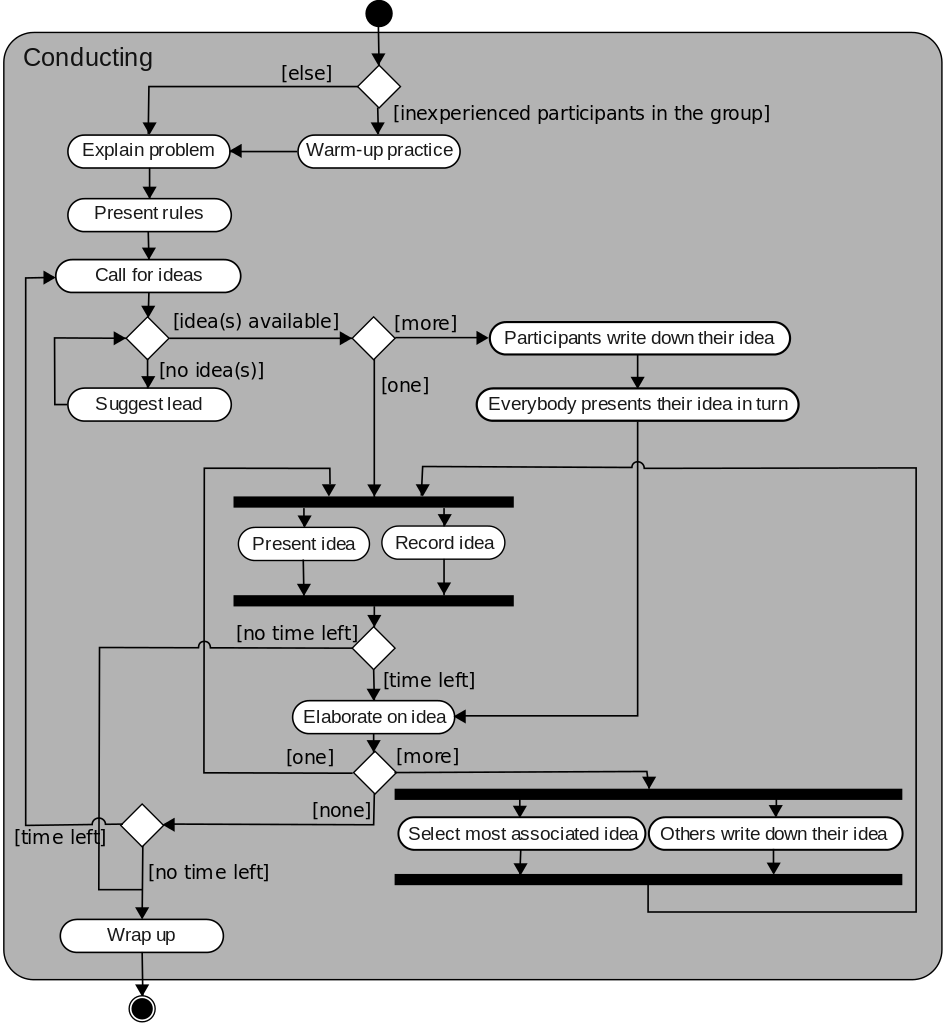Notes about the initial brainstorming method
A summary of the origin of the brainstorming technique as Alex Osborn described it in 1953 in the famous book “Applied Imagination.”
Alex Faickney Osborn co-founded the advertising agency BBDO in 1919. He introduced the term “brainstorming” in a book named “How to Think Up” in 1942. In 1953 he published “Applied Imagination - principles and procedures of creative thinking”, where he describes more idea generation techniques.
Osborn cites a study saying that a group who used brainstorming produced 44% more worthwhile ideas than people working individually. The original technique had four guidelines:
- Criticism is withheld during the session because the purpose is to generate as many different ideas as possible.
- Freewheeling is encouraged to create wilder, unusual ideas
- The focus is on quantity: the many ideas the better
- Combination and improvement are supported so participants can not only contribute with their ideas, but they can suggest improvements to other people’s ideas or they can join more ideas into a bigger, wider one.
Sorting and evaluation of ideas is essential in CPS and should be the subject of another meeting.
Here are the requirements Osborn had for facilitators:
- Should ask stimulating questions
- Should have plans for guiding the generation of ideas
- Should provide warm-up exercises
- Should teach and reinforce the guidelines - Should do the planning and scheduling of follow-ups
Osborn also recommended to have someone to handle the recording and collecting the ideas during the sessions.
The size of the group should be between 5 and 10 participants. Profile of the participant: should be a self-starter and should have experience with the matter/area related to the brainstorming subject.
Here is how a process might look like:
- Preparation of the type of the problem to be approached
- Send a one-page background and invitation memo to participants describing the task to be solved with some example of the kind of ideas desired
- Individual ideation should be done by each participant on their own in advance before the group session
- Group brainstorming session - with the duration between 30 and 45 minutes
- Follow-up individual ideation should happen again after the group session
But you can look at this picture from Wikipedia for a more detailed view of the process he describes:

One last important thing that I want to share is the original Idea Prompter - a list of questions useful to support idea generation:
-
Adapt: What else is like this? What other idea does this suggest? Does the past offer parallel? What could I copy? Whom could I emulate?
-
Modify: New twist? Change meaning, color, motion, sound, odor, form, shape? Other Changes?
-
Magnify: What to add? More time? Greater frequency? Stronger? Higher? Longer? Thicker? Extra Value? Plus ingredient? Duplicate? Multiply? Exaggerate?
-
Minify: What to subtract? Smaller? Condensed? Miniature? Lower? Shorter? Lighter, Omit?, Streamline?, Split up? Understate?
-
Substitute: Who else instead? What else instead? Other ingredients? Other material? Other processes? Other power? Other places? Other approaches? Other tones of voice?
-
Rearrange: Interchange components? Other patterns? Other layouts? Other sequences? Transpose cause and effect? Change pace? Change Schedule?
-
Reverse: Transpose positive and negative? How about opposites? Turn it backward? Turn it upside down? Reverse roles? Change shoes? Turntables? Turn other cheeks?
-
Combine: How about a blend, an alloy, an assortment, an ensemble? Combine units? Combine purposes? Combine appeals? Combine ideas?
There are more recent variations of these questions, worth mentioning is the SCAMPER idea generation method. Interaction Design has a great resource about how to use SCAMPER ideation method.